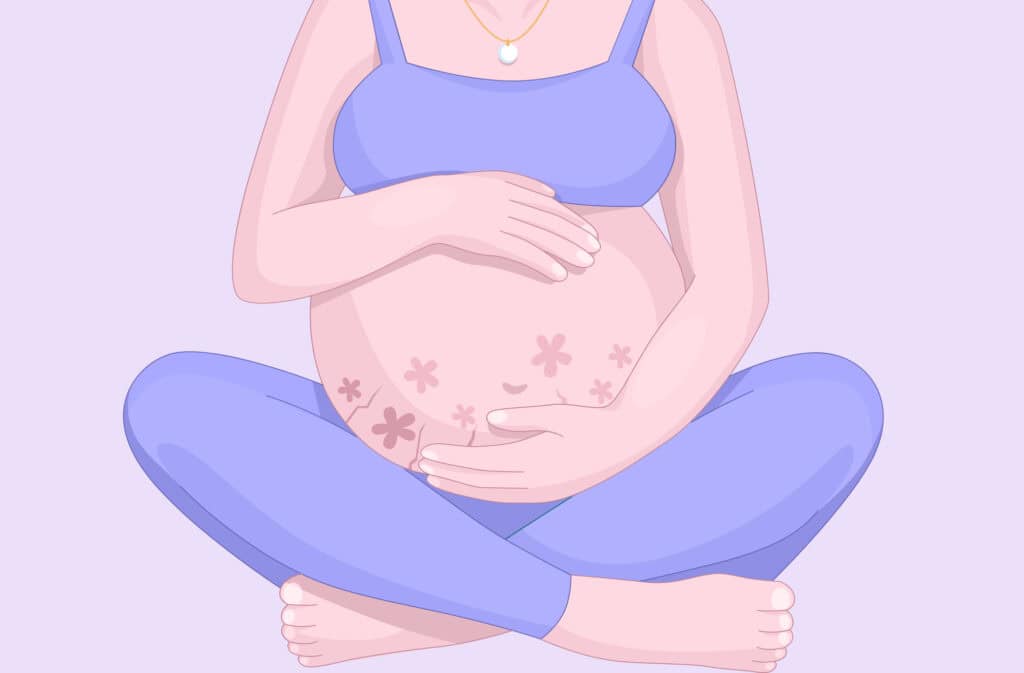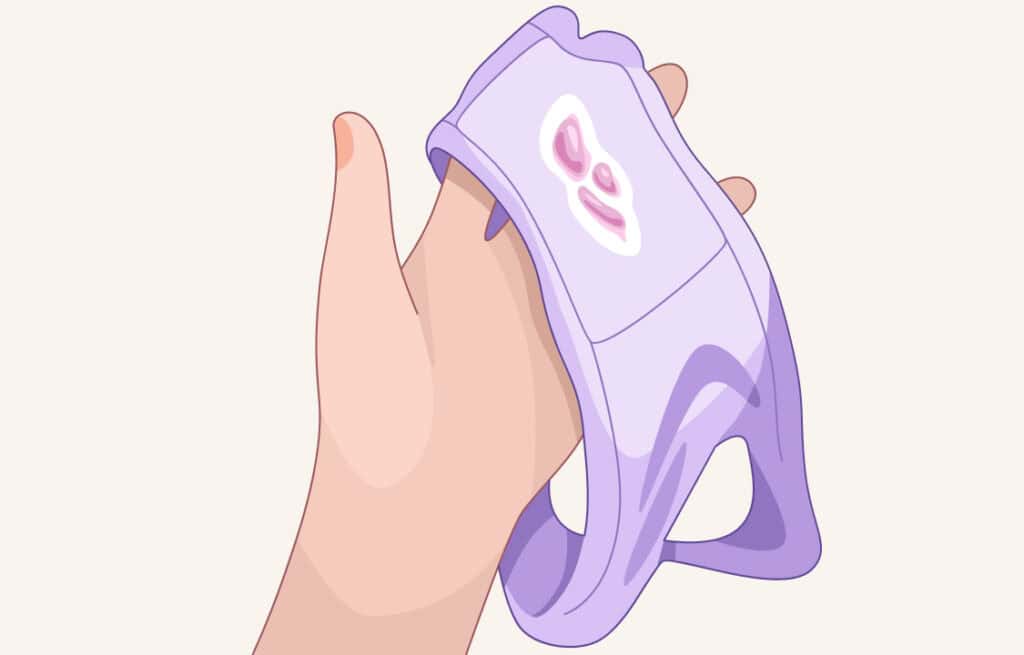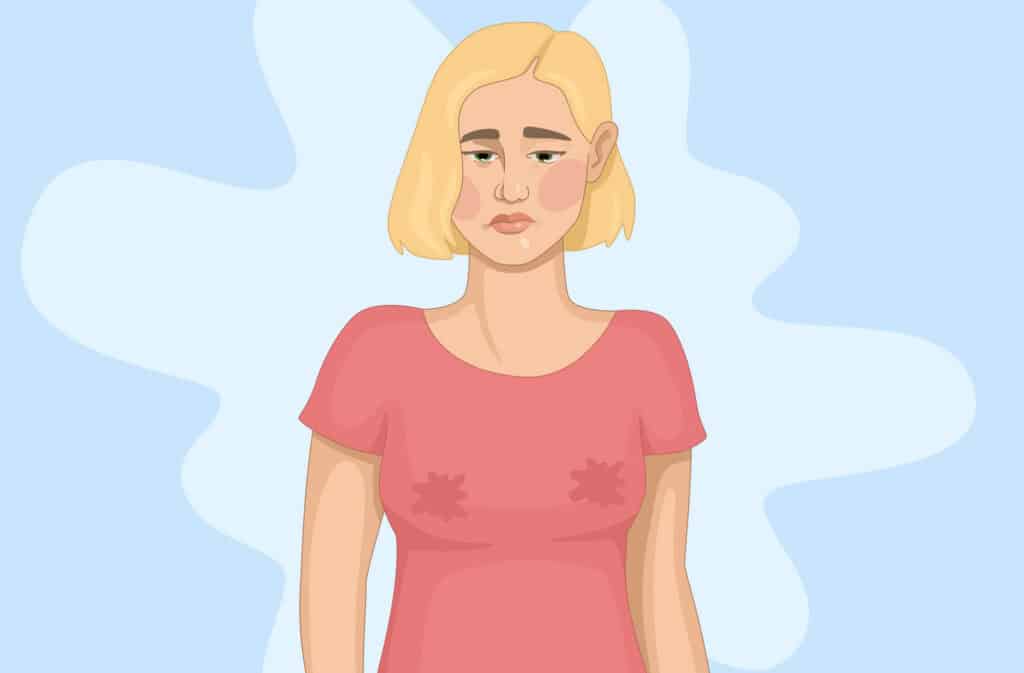Femia > Health Library > Pregnancy > Pregnancy health > PUPPP rash: Causes, symptoms, and how to manage pregnancy’s itchy rash
PUPPP rash: Causes, symptoms, and how to manage pregnancy’s itchy rash

- Updated Feb 10, 2025
- Published
CRAFTED BY HUMAN
Crafted by human At Femia, we provide accurate and up-to-date information at every stage of your journey, from trying to conceive, pregnancy and postnatal support. All content is created by a real person based on in-depth research and own professional experience. Femia ensures that you will receive expert advice, strict accuracy and a personalized approach from our authors/medical experts. Learn more about our editorial policy.
FACT CHECKED
Fact checked At Femia Health, we maintain the highest standards of editorial excellence in delivering content focused on helping you conceive, guiding you through pregnancy, and supporting you postpartum. Explore our content review principles to learn how we ensure the accuracy and quality of our health and lifestyle tips for every stage of your journey.
- PUPPP rash is a harmless but itchy skin condition that commonly develops in the third trimester of pregnancy.
- Key symptoms include red, hive-like bumps around stretch marks, intense itching, and rash expansion to other areas.
- Safe remedies like cold compresses, oatmeal baths, and pregnancy-safe creams can help alleviate discomfort. Dietary adjustments and avoiding triggers like foods high in sugar and with a high glycemic index may also support symptom management. Consult a healthcare provider for tailored advice.
PUPPP is a medical term for an itchy rash that sometimes may appear during pregnancy. PUPPP are itchy, hive-like bumps, which usually form in the stretch marks on your belly and spread to other parts of your body during pregnancy. Although PUPPP is uncomfortable, it’s fully harmless to both you and your baby and often goes away soon after the delivery. Now let’s explore PUPPP rash in detail, including its causes and management.
With Femia, you will get personalized insights every step of the way
What is PUPPP rash?
PUPPP, also called toxemic pregnancy rash, is one of the most common skin conditions during pregnancy. The letters PUPPP mean Pruritic Urticarial Papules and Plaques of Pregnancy. Although harmless, this itchy red rash with hive-like bumps appears on the belly and stretch marks during your third trimester and may also spread to other parts of the body, including the back, breasts, arms, and buttocks. This rash usually goes away on its own and doesn’t cause lasting color changes and scarring to your skin.
What causes PUPPP rash?
The precise reason for PUPPP is still unknown. However, the most dominant theories suggest that the rash develops in areas where the skin is stretched, for example, stomach PUPPP rash develops around where the stomach’s skin was stretched. This happens because increased vascularity and damaged collagen could trigger an immune inflammatory response, causing PUPPP.
In addition, hormonal changes occurring during pregnancy may also cause PUPPP rash. For example, high progesterone levels have been found in many women with PUPPP rash.
The last theory regarding the reasons behind PUPPP rash is the peripheral deposition of fetal DNA (especially of male fetuses) on the mother’s skin, usually occurring during the third trimester. PUPPP rash also more often appears in subsequent pregnancies, which may be caused by a stronger immune system response.
👉Find out more: Signs of hormone imbalance after pregnancy: What to expect and when to seek help
Third-trimester PUPPP rash: Why does it happen?
PUPPP usually occurs in the third trimester, since this is when the skin stretches the most, particularly around the abdomen. This rapid stretching leads to irritation and inflammation of the skin, potentially triggering PUPPP rash in pregnancy.
Certain factors may increase the likelihood of developing third trimester PUPPP rash:
- Male fetus: there are theories that women carrying male babies may have a higher risk of the rash.
- Multiple pregnancies: the increased abdominal stretching from twins or triplets is a common trigger.
Early-stage PUPPP pregnancy rash symptoms and signs
PUPPP begins in the third trimester (36 weeks gestation on average). In most cases, PUPPP appears in the striae gravidarum (stretch marks) of the lower abdomen, spreading to the thighs, proximal arms, low back, and even more distant sites. Here is a breakdown of key symptoms:
- Itchy rash: The main symptom is an intensely itchy rash that reduces overall quality of life and prevents women from having a good night’s sleep. The itching can be mild and severe.
- Red bumps and plaques: Women searching for PUPPP rash pictures may notice small pink papules appearing first in the stretch marks around the umbilicus. They may also come with a pale halo around each papule. These papules coalesce forming large, red, urticated (hive-like) plaques.
- Rash expansion: Although the rash starts on the abdomen, early pregnancy rash pictures show that it usually spreads to the back, chest, and legs.
- Burning sensation: Some women also report a burning sensation or tenderness in the affected areas that adds discomfort.
Is PUPPP rash contagious to others?
Doctors don’t know how exactly a PUPPP rash spreads yet, but the rash isn’t contagious — there is no risk for other people or for the baby.
Managing PUPPP rash during pregnancy
Dealing with a PUPPP rash can be challenging. Consulting a healthcare provider is the best way to receive customized guidance. Here are some tips to consider:
- Apply cold compresses: consider gently applying a cold compress to affected areas to soothe the skin and reduce itching. Do this several times a day for immediate PUPPP rash relief.
- Use pregnancy-safe creams or antihistamines: ask your healthcare provider for antihistamines that alleviate itching, or look for anti-itch creams, but make sure they are safe to use during pregnancy.
- Take oatmeal baths: Lukewarm oatmeal baths may be an effective method to reduce pain from inflamed skin. We recommend using colloidal oatmeal, which is specifically designed for baths, letting it soak for 15-20 minutes.
- Wear loose, breathable clothing: Tight and synthetic fabrics irritate sensitive skin, worsening PUPPP rash, so opt for soft and cotton garments to reduce discomfort and further inflammation.
- Stay hydrated and moisturized: Drinking enough water (8 to 12 cups a day) and using gentle, pregnancy-safe moisturizers without fragrances helps keep your skin hydrated and reduce irritation.
- Consult your doctor: Consult a healthcare provider before using any medications. Discuss symptoms and options with a doctor to ensure your and your baby’s safety.
👉Find out more: Pregnancy nose: What causes it and when does it go away
Foods to avoid with PUPPP rash
Managing your diet during pregnancy can be tough, particularly when you’re craving your favorite treats. But those suffering from PUPPP rash should avoid certain foods that can help exacerbate their symptoms. Here’s the low down on what foods to avoid and what to focus on:
- Limit histamine-rich foods: Histamine, as a natural chemical that helps cells communicate, is responsible for the visible symptoms of an allergic attack. So consider limiting foods that may exacerbate itching. These include aged cheeses, fermented foods, cured meats, and processed snacks. These can increase inflammation in some individuals.
- Reduce sugar and processed foods: Foods rich in sugar or refined carbohydrates promote inflammation, which may worsen skin irritation. These foods include cereal, bagels, candy, soda, canned fruit, cookies, pasta, fries and pizza to name a few.
- Focus on anti-inflammatory foods: Incorporate fresh fruits, leafy greens, and vegetables, which are rich in antioxidants and vitamins that support skin health. Omega-3 fatty acids found in fish like sardines and salmon can also reduce inflammation.
- Stay mindful of triggers: Everyone’s body reacts differently, so monitor your diet to identify foods that worsen your symptoms.
PUPPP rash postpartum: What to expect
The best news is that PUPPP rash (Pruritic Urticarial Papules and Plaques of Pregnancy) : should be disappear right after delivery. Most new mothers notice that the rash goes away as soon as hormone levels stabilize and the skin begins to heal. However, in some cases, the rash may persist or worsen. If this happens, it’s essential to monitor your body closely and consult a healthcare provider when required.
PUPPP rash postpartum: When to worry?
Reach out to your healthcare provider if you experience any of the following symptoms:
- The rash spreads rapidly or worsens instead of improving
- Signs of infection, such as pus, redness, swelling, or fever, develop
- The rash persists beyond a few weeks postpartum, as this could indicate another underlying condition
Prompt medical advice helps ensure you receive appropriate care and helps rule out more serious concerns.
With Femia, you will get personalized insights every step of the way
Questions from the Femia community
Does having PUPPP rash mean I'll get it in future pregnancies?
The short answer is no, not necessarily. PUPP rash is more likely to appear during the first pregnancy rather than in future ones.
Can I prevent PUPPP rash during pregnancy?
Since there is no established reason for PUPPP rash to appear, there are also no guaranteed ways to prevent it. However, it's always best to keep your skin moisturized and avoid known irritants, such as harsh soaps, abrasive scrubs, exfoliants, and overly tight clothes. It may also help reduce the risk of PUPPP rash.
How do I differentiate PUPPP rash from other pregnancy rashes?
PUPPP rash typically appears around stretch marks, is intensely itchy, and is usually localized to the abdomen, thighs, and buttocks. It does not affect internal organs and is limited to surface-level skin irritation.
In contrast, cholestasis of pregnancy causes itching on the palms of the hands and soles of the feet, often worsening at night. It is associated with elevated bile acid levels, which is not seen with PUPPP. While jaundice can occur in 10-15% of cholestasis cases, it is a rare complication. If you're unsure about your rash or symptoms, consult your healthcare provider for an accurate diagnosis.
Can I breastfeed with PUPPP rash?
Yes, PUPPP rash isn't contagious or dangerous for the baby. It also doesn't interfere with breastfeeding.
The bottom line
PUPPP rash is a common, harmless skin condition during pregnancy, often resolving on its own postpartum. Managing symptoms with remedies like cold compresses, oatmeal baths, and pregnancy-safe creams can provide relief. Consult your healthcare provider for guidance if symptoms persist or worsen after delivery.
References
- “PUPPP Rash: Symptoms, Causes, Treatment & Prevention.” Cleveland Clinic, my.clevelandclinic.org/health/diseases/22374-puppp-rash.
- Kim, En Hyung. “Pruritic Urticarial Papules and Plaques of Pregnancy Occurring Postpartum Treated with Intramuscular Injection of Autologous Whole Blood.” Case Reports in Dermatology, vol. 9, no. 1, 27 Apr. 2017, pp. 151–156, https://doi.org/10.1159/000473874. Accessed 24 Dec. 2021.
- “Pruritic Urticarial Papules and Plaques of Pregnancy – an Overview | ScienceDirect Topics.” Www.sciencedirect.com, www.sciencedirect.com/topics/medicine-and-dentistry/pruritic-urticarial-papules-and-plaques-of-pregnancy.
- “Polymorphic Eruption of Pregnancy. PUPPP | DermNet NZ.” Dermnetnz.org, dermnetnz.org/topics/polymorphic-eruption-of-pregnancy.
- “Third Trimester Pregnancy – an Overview | ScienceDirect Topics.” Www.sciencedirect.com, www.sciencedirect.com/topics/medicine-and-dentistry/third-trimester-pregnancy.
- “Striae Gravidarum – an Overview | ScienceDirect Topics.” Www.sciencedirect.com, www.sciencedirect.com/topics/medicine-and-dentistry/striae-gravidarum.

Discover 8 common causes of pink vaginal discharge and light bleeding. Learn what this could mean for your health, associated symptoms, and when to consult a doctor.

Learn how to lower prolactin levels naturally and with medical treatments to improve fertility. Discover causes, symptoms and practical tips to support conception.

Can you fly when pregnant? Click for an overview of flight safety during pregnancy, airline policies, and tips to ensure a smooth and safe flight!

